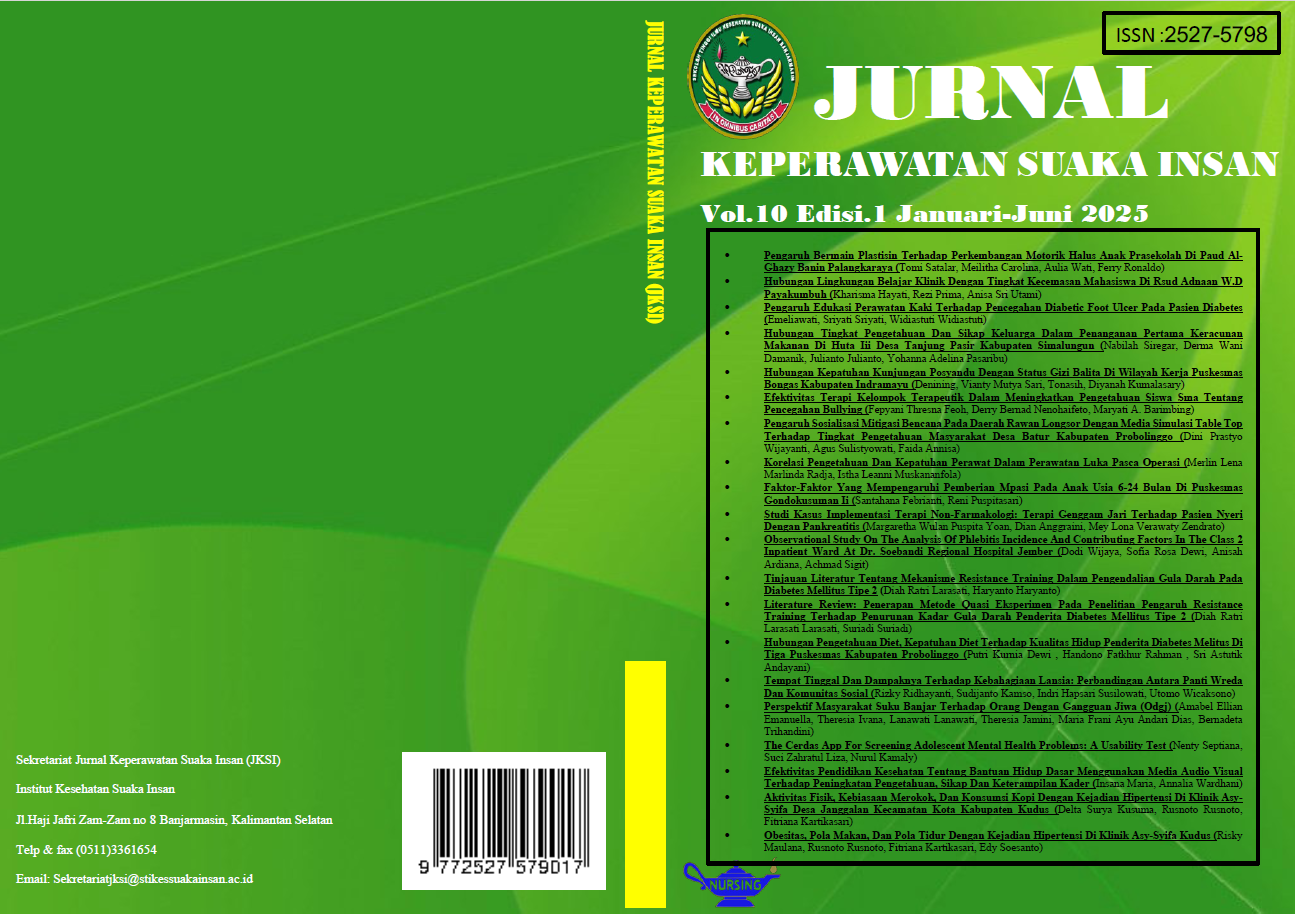The CERDAS App for Screening Adolescent Mental Health Problems: A Usability Test
DOI:
https://doi.org/10.51143/jksi.v10i1.877Keywords:
Adolescent, CERDAS app, Mental health, Usablity, Website-based aplicationAbstract
Adolescent mental health is becoming increasingly serious, affecting adolescents' ability to learn. One of the areas that need special emphasis is the use of an innovative website-based CERDAS app as an initial screening of adolescent mental health. The purpose of this study is to determine the CERDAS app usability as an initial screening tool for adolescent mental health. The study's design is descriptive with a cross-sectional approach. Simple random sampling was used to pick 94 respondents for the study. mental health of adolescents. Evaluate the usability of the CERDAS app using a website user satisfaction questionnaire developed by Handayani (2014). It contains 15 question items divided into four aspects: ease of use, customized, download delay, and content. This questionnaire has been valid and reliable. Data analysis used frequency distribution and percentage to describe the usability of the CERDAS app. The results showed that the CERDAS app was very useful, with with 84.4% ease-of-use, 89.3% customized, 86.9% download delay, and 89.9% content.The CERDAS app is a very useful tool for screening the mental health of adolescenst. The development of features for techniques for managing mental health problems will likely improve adolescent mental health.
Downloads
Published
How to Cite
Issue
Section
License
Copyright (c) 2025 Nenty septiana, Suci Zahratul LIza, Nurul Kamaly

This work is licensed under a Creative Commons Attribution 4.0 International License.
Authors who publish with Jurnal Keperawatan Suaka Insan (JKSI) agree to the following terms:
1) Authors retain copyright and grant Jurnal Keperawatan Suaka Insan (JKSI) right of first publication with the work simultaneously licensed under a Creative Commons Attribution License CC BY that allows others to remix, adapt, and build upon the work with an acknowledgment of the work’s authorship and initial publication in this journal.
2) Authors are able to enter into separate, additional contractual arrangements for the non-exclusive distribution of the journal’s published version of the work (e.g., submit it to an institutional repository or publish it in a book), with an acknowledgment of its initial publication in this journal.
3)Authors are permitted and encouraged to post their work online (e.g., in institutional repositories or on their website) prior to and during the submission process, as this can lead to productive exchanges, as well as earlier and greater citation of published work (see the discussion about The Effect of Open Access).











